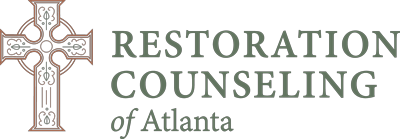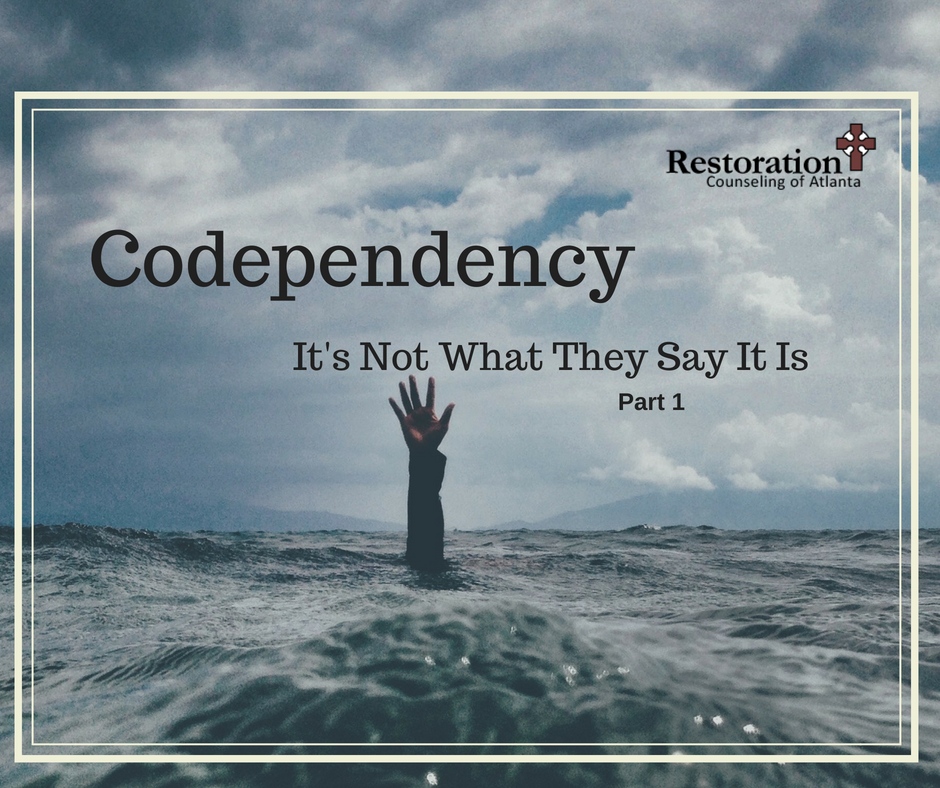Ask five people in Atlanta what codependency is as it relates to addiction, and chances are you’ll have five definitions, each of them different, and none of them entirely correct. Codependency is one of the least understood of relationships because people think the term explains itself. They define dependency. They put Co- in front of it. And off they go. Then unsuspecting souls who cross their paths get labeled codependent.
Now, the reason we’re concerned with codependency is that it is a problem. Yet many definitions don’t seem to point to a problem at all. For example, if dependency is understood to mean reliance, then codependency would apply to any relationship where people rely on each other for anything. That sounds like marriage. Yet we’re not about to say that marriage is codependency. On the other hand, marriage is a likely place to look for codependent persons. More of that later.
If you’re someone who’s been labeled, this may help you
decide if the label really fits. To begin with, you’ll need to know that codependency is not a healthy condition. It’s an addiction. Let me say that again. It’s important. Codependency is an addiction. Let’s take a moment to remind ourselves about addiction since it too is often misunderstood.
There are two kinds of addiction: substance and behavioral. The former involves things which are ingested—like drugs. They change brain chemistry. This brings about a change in our emotional state as we go from pain to pleasure, and the good feeling is why we go back for more. Alcohol and narcotics are sources of substance addiction.
A behavioral addiction involves repetition of certain actions which trigger the reward circuitry in the brain and which produce a neuro-chemical condition that closely resembles that of substance addiction. Gambling and work are potential sources of behavioral addiction. Just as a gambling addict continues rolling the dice until he loses everything, the workaholic will work and neglect other aspects of his life until he loses everything.
Defining any addiction as a learned response to pain in which the individual seeks to eliminate pain without addressing its cause, and noting that he does this by means of some mood or mind altering substance or a behavior that stimulates a change in perception and mood, let’s look at codependency with a view to its being a form of addiction, We’ll begin by identifying characteristics all addictions have in common. We’ll then re-examine each of them as it is reflected in the behaviors of persons who are codependent.
- Addiction is either substance or behavior centered.
- Addiction is learned.
- Addiction is a response to pain.
- Addition is pleasure seeking.
- Addiction ignores the true cause of pain.
- Addiction causes problems.
- Addiction is treatable.
Number One: Codependency is a behavioral addiction. Codependency relies on conduct, and always requires interaction with another person. Also, the closer the relationship, the more codependency is likely to flourish. This is why we said marriages are likely places to find the problem. The behavior patterns associated with codependency may be extensive and varied, but the action the codependent person turns to for relief of his pain and attainment of pleasure is behavior devoted to “helping” someone who appears incapable of helping himself. That’s why a codependent relationship calls for one person who is relatively weak and another who seems stronger and able to assume the dominant role.
On the surface the pattern may seem quite positive. Who would discourage anyone from helping another? However, the motive behind the caretaking is not the wish to serve others, but to generate a sense of self-centered well-being in the codependent caretaker. In short, as the alcoholic drinks, the codependent helps. Each seeks to change the way he feels by means that fail to address the underlying cause of his pain.
Also, as we observe the alcoholic in action, we see he is driven by the desire to maintain control. The codependent also seeks control¾control over the person he helps. Control establishes a false sense of security in the codependent person and is therefore a means of lowering his anxiety. This may even reach the point of interfering with the other person’s right to run his own life. It is this control, coupled with his belief that he is doing good that gives the codependent a sense of heightened self-esteem.
Number Two: Addiction is learned. Things that are learned include skills, understandings, attitudes, and patterns of behavior that we are not born with. We acquire them from our environment. The word, learner may conjure up the image of children sitting obediently at their school desks while a teacher, pointer in hand, instructs them. But our most significant learning we get through immersion. The things we learn from being a part of what’s happening around us will so shape us that they become part of the fabric of our personality. They are not easily forgotten, which is to say, they’re very difficult to change.
Think about this contrast. Every schoolchild studies English for 13 years in a formal, classroom setting. But, at the age of five, before even stepping inside a school, he is fluent in English. The 13 years which follow only refine and reinforce what was learned at home. This reminds us that a great deal of learning takes place at an early age; that it will have major effects on the rest of our lives; and that we probably won’t forget it. Like the spoken language, most of what we learn to expect from the world and most of what we learn about coping with it is learned in childhood. To determine how the codependent addict came to be the way he is, we look to his growing up.
Often the codependent grows up in a dysfunctional family system. In worst case scenarios there is volatility and outright violence. This can include physical, sexual, verbal, and emotional abuse, often at the hands of an active addict. Even without the violence, a dysfunctional system fosters dishonesty, distrust, disrespect for others, and for oneself. One lives with inconsistency, unpredictability, and irresponsibility. The young child learns to avoid problems instead of solving them. Communication is poor at best and often nonexistent. There are broken promises, failed commitments and unfaithfulness.
The developing child learns he has no value outside of what he can produce. He lives without affirmation, and cautiously picks his way through a domestic minefield in which any moment someone’s temper may explode. When it happens, he is often blamed. He learns to be guarded. An unsettling anxiety comes over him whenever he enters unfamiliar territory. Put simply, the child who lives in a dysfunctional system learns that the world is a dangerous, place in which to live.
Dangerous places give rise to fear. When fear is prolonged for days, and then years, it becomes a component of life, and we call it anxiety. Anxiety, however, isn’t the product of danger alone. Danger is the catalyst, but the active ingredient is the absence of control. When real or imagined danger pierresents itself, and the anxious one struggles to gain control, as we said earlier, he does it to reduce anxiety. There, in a nutshell, we discover the connection between codependency, anxiety, and control.
We wonder why he doesn’t try to change his environment, or at least to get out of it. But sadly, this young person needs his environment. Even an infant knows that it’s dangerous to be alone. He has no other place to go. Without exposure to other lifestyles, he assumes that dysfunction is normal. The idea of changing the system doesn’t even cross his mind because it’s beyond his experience.
Two choices are left to him. He can follow the example of parents and siblings and be absorbed into the system, or he can learn to protect himself from the system by manipulating it. If the family centers around alcoholism, then to be absorbed means he learns to be an alcoholic. On the other hand, with the second option, he learns codependency.
Even if a person doesn’t travel the road to alcoholism or some other substance addiction, he will still take on many of the character flaws to which he is exposed. This is so true that often the only way to tell the difference between an active alcoholic and a codependent is to smell his breath.
The growing codependent may try to establish self-worth by avoiding the overt alcoholism often present in his family of origin. A child of alcoholics may swear he will never drink and succeed in adhering to his plan. But this leads to the false belief that abstinence has made him immune to the dysfunctional environment in which he grew up.
Thinking himself stable, he may establish himself as one who fixes things. Paradoxically he never feels so good about himself as when there is a domestic crisis that calls for his help. When things are going well, this knight in shining armor becomes depressed, and a feeling of insignificance creeps over him. As his codependency grows he begins to seek new crises. He may even create a crisis or two of his own. When he comes of age and it’s time to leave home, the knight errant sets off on a quest for a poor, dysfunctional damsel in distress. She may be an alcoholic just like Mom or Dad. Our knight will marry this helpless creature. He believes they’ll live happily ever after as she turns to him for every good thing, and he provides it. They seem to be made for each other.
We shouldn’t leave this topic without saying that most codependent behavior doesn’t come from conscious planning. The image of deliberate choices helps us paint more vivid pictures of how codependents act, but they have little awareness of what they are doing. If you, the reader, have begun to recognize yourself in the content of this message, you are not being accused of malice to any degree. Most maladaptive behavior is learned unconsciously, and remains with us only because it seems to work for us. On the other hand, if you can hear us saying, this is what you’re doing, and this is why it isn’t working, therein lies the hope of healing.
The above blog is an excerpt from Beyond Denial by Patrick Caffrey, LPC, a staff member at Restoration Counseling specializing in addictions and related issues. The content is copyrighted material.
Patrick Caffrey, LPC[trx_image url=”https://restorationcounselingatl.com/wp-content/uploads/2018/02/Pat-PP-300×300.jpg” align=”left” shape=”square” top=”inherit” bottom=”inherit” left=”inherit” right=”inherit”]Patrick Caffrey, MS, LPC is a member of the Restoration Counseling therapy staff. He specializes in the area of addictions including alcoholism, drug abuse, codependency, adult children of alcoholics, and related family issues. He is the author of a number of published books on physical, mental, and spiritual recovery from addiction. Copies are available at the Restoration office in Roswell, Georgia or on Amazon.com. Appearing in two parts, the preceding article is excerpted from a chapter on codependency in Pat’s book entitled Beyond Denial.
Roswell and Woodstock locations
pat@restorationcounselingatl.com
678.534.3824 x 114

